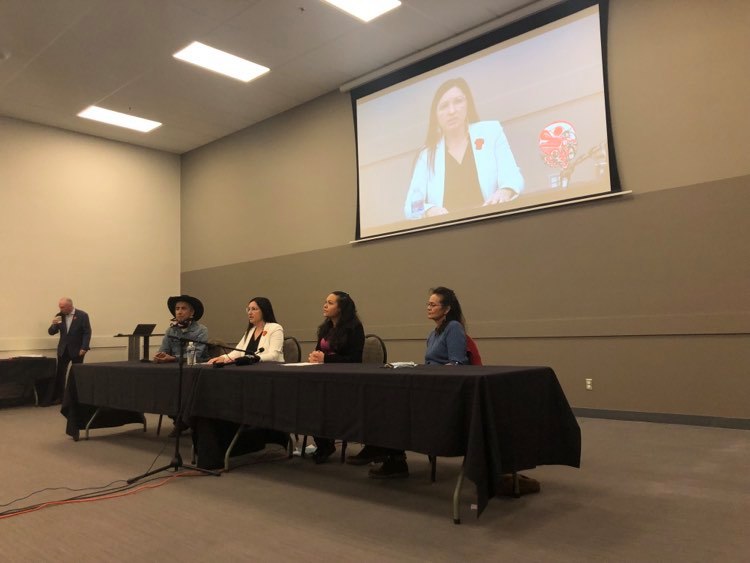The Saik’uz First Nation is advocating for some changes to the way forest management work is conducted on the Nation’s unceded traditional territory.
Chief Priscilla Mueller says the old-growth forests that grow within Sai’kuz territory have been practically wiped out, and what remains is being targetted by the forestry industry.
As a result of this, leaders of the Sai’kuz First Nation have made the following three demands to create a more sustainable future of forestry within the nation:
- The province must immediately protect areas of high forest biodiversity value as well as Moose and ungulate winter ranges within Sai’kuz territory on an interim basis until Sai’kuz, the province, and other Carrier Sekani First Nations conclude a resource management planning process;
- Forest Licensees and the Province must obtain Saik’uz’s free, prior, and informed consent before proceeding with any forestry (or other resource development) activities within Sai’kuz territory; and
- Saik’uz and the Province must immediately co-develop and implement rehabilitation and restoration projects in Saik’uz’s Territory to address the unjustified infringements of our Aboriginal title and rights that have occurred as a result of industrial forestry activities that have proceeded in Saik’uz Territory without Saik’uz consent and against our strenuous objections.
Chief Mueller says these changes must be made immediately to protect what’s left of forests in the Territory.
“The cause is decades of mismanagement through unsustainable development,” explained Chief Mueller,” large clear-cuts and monoculture, tree plantations as far as the eye can see. Today we are announcing that these practices are no longer taking place in our territory.”
She adds Canada’s history of forcing Indigenous people onto reservations gave the government the opportunity to extract their valuable natural resources that are traditionally used for medicine and food.
The Chief and Council of Saik’uz made it clear that they are not against the forestry industry, they just need some changes to be made.
“We are not against all forestry development, and our community does participate in the forest economy in various ways. From harvesting Timber commercially to manufacturing, to layout and monitoring. But we have not been equal partners in any meaningful sense,” explained Councillor Jasmine Thomas.
Thomas adds in order for BC’s forestry industry to become more sustainable, license holders must take the opportunities to work alongside Indigenous people and utilize their knowledge of the land while working.
“Our message to the government and industry is that starting today, we get the final say about forest management, land-use, and how things are done in Saik’uz Territory. I strongly suggest that government and industry obtain our consent prior to attempting to proceed with any further resource development in our Territory,” stated Chief Mueller.
During this announcement, Saik’uz First Nation also presented a new 13-minute documentary by the name of ‘Old Growth, New Beginnings’, which portrays the devastating impact that forestry practices have had on the territory.
Sai’kuz First Nation Territory is located south of Vanderhoof and encompasses a vast area of land that stretches from Punchaw to Knewstubb Lake.
Something going on in the Prince George area you think people should know about?
Send us a news tip by emailing [email protected].






